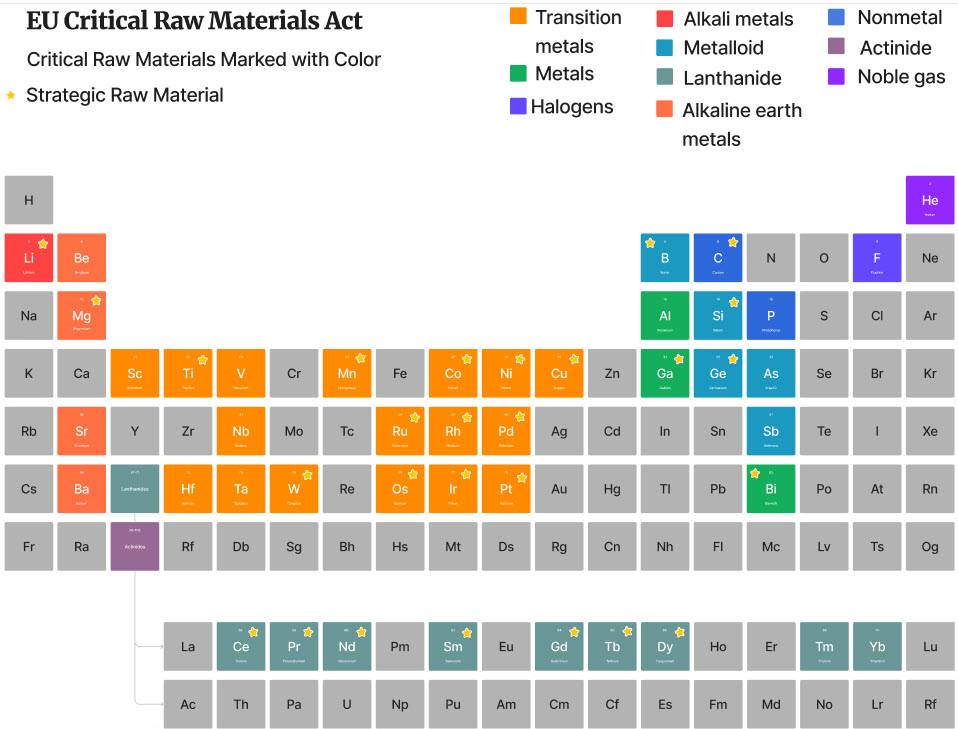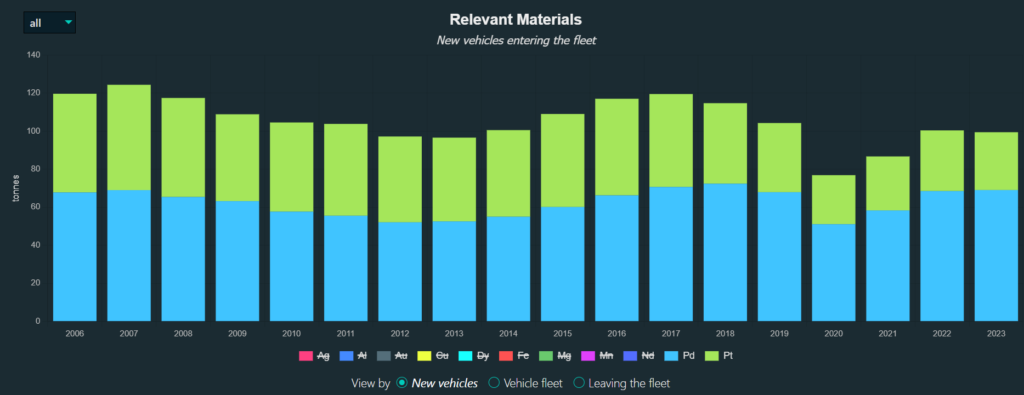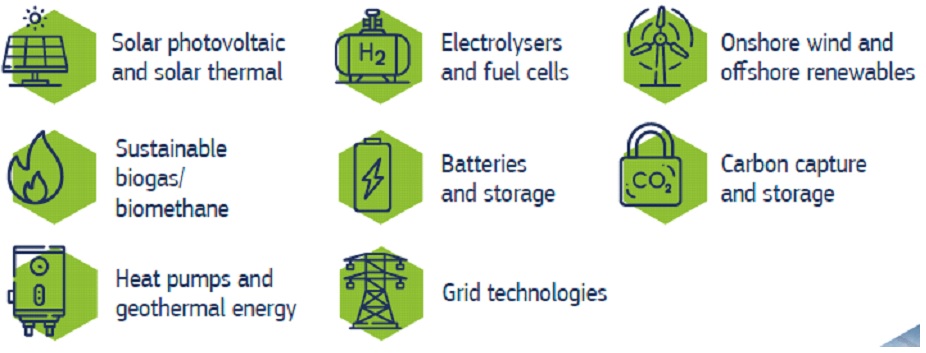European Critical Raw Materials Act
Targets: 10% extraction, 40% processing, 15% recycling of critical raw materials.
Funding: None
On March 16th 2023, the European Commission has published the Critical Raw Materials Act. This comes on the close heels of and in many ways as a response to the US Inflation Reduction Act, which has resulted in a flurry of investments in battery and electric vehicle manufacturing across the ocean.
Here is a summary of the main provisions of this Act.
2030 Goals
The regulation aims to increase extraction of raw materials, their processing and recycling to the levels shown in this infographic and reduce dependence on an individual country for any of the strategic raw materials.

Critical and strategic raw materials
This periodic table shows the updated list of critical and strategic raw materials, according to this regulation.

Strengths and drawbacks of this Act
The CRM is a good step forward by the European Commission in setting targets for securing and processing raw materials critically needed in the coming decades.
Some strengths:
- The act does well to remove dependence on a single external country for the critical materials.
- There are provisions for compliance and monitoring of the reserves of strategic materials, both at the national and company levels.
- Also highlighted is the need to achieve the targets in a sustainable manner.
And some criticisms:
- The targets as currently defined may not be sufficient to establish a secure supply chain. 10% domestic extraction and 40% processing seems rather weak.
- The targets are currently not legally enforceable for Member States.
- The biggest criticism is that there are no financial incentives or funding earmarked to attract new projects and support the goals. A working document published subsequently estimates that investments to the tune of EUR 92 billion will be required by 2030 “only for a part of the net-zero technologies … excluding solar thermal, tidal and wave technologies, storage other than batteries, geothermal, fuel cells, biogas and biomethane technologies, grid technologies”. The document further states that “the current EU budget has insufficient possibilities for supporting the objectives of the Net-Zero Industry Act and for ensuring a level-playing field between Member States, relative to the identified public investment needs“
Additional Resources
Check out this excellent, related resource –
The “Raw Materials Information System” developed by the Joint Research Center (JRC)
(Picture shows an example of the platinum and palladium use in vehicles)

Further Reading
The CRM was accompanied by the publication of another regulatory document, the “Net Zero Industry Act“, which proposes to manufacture > 40% of strategic net-zero technologies in Europe with provisions for streamlined permitting (but again little to no funding).

Sign up here to receive such summaries and a monthly newsletter highlighting the latest developments in transport decarbonization
5-Min Monthly
Sign-up to receive newsletter via email
Thank you!
You have successfully joined our subscriber list.

